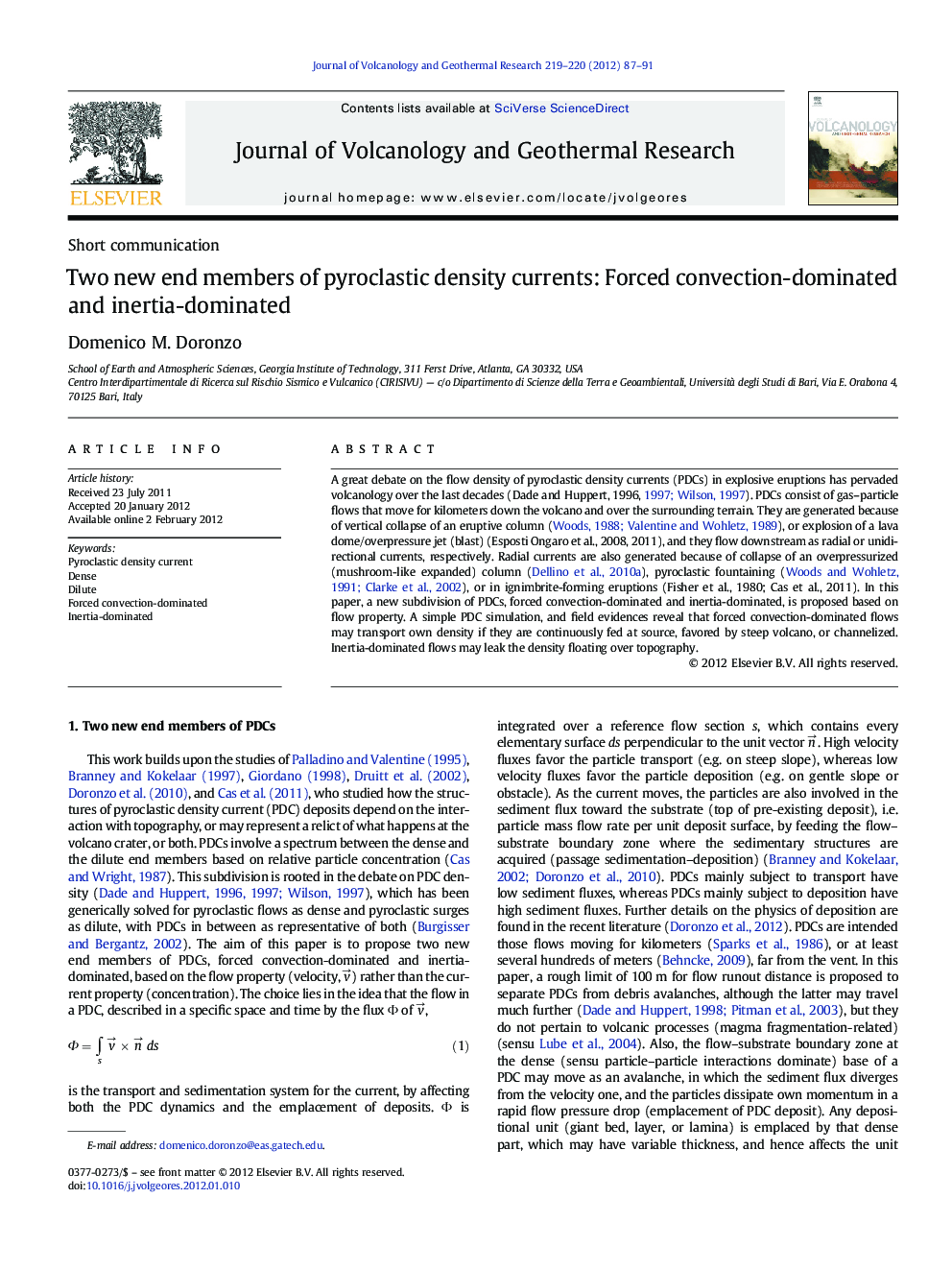| Article ID | Journal | Published Year | Pages | File Type |
|---|---|---|---|---|
| 4713462 | Journal of Volcanology and Geothermal Research | 2012 | 5 Pages |
A great debate on the flow density of pyroclastic density currents (PDCs) in explosive eruptions has pervaded volcanology over the last decades (Dade and Huppert, 1996, Dade and Huppert, 1996, Dade and Huppert, 1997 and Wilson, 1997). PDCs consist of gas–particle flows that move for kilometers down the volcano and over the surrounding terrain. They are generated because of vertical collapse of an eruptive column (Woods, 1988 and Valentine and Wohletz, 1989), or explosion of a lava dome/overpressure jet (blast) (Esposti Ongaro et al., 2008, 2011), and they flow downstream as radial or unidirectional currents, respectively. Radial currents are also generated because of collapse of an overpressurized (mushroom-like expanded) column (Dellino et al., 2010a), pyroclastic fountaining (Woods and Wohletz, 1991 and Clarke et al., 2002), or in ignimbrite-forming eruptions (Fisher et al., 1980; Cas et al., 2011). In this paper, a new subdivision of PDCs, forced convection-dominated and inertia-dominated, is proposed based on flow property. A simple PDC simulation, and field evidences reveal that forced convection-dominated flows may transport own density if they are continuously fed at source, favored by steep volcano, or channelized. Inertia-dominated flows may leak the density floating over topography.
► Pyroclastic density currents are generically subdivided in dense and dilute. ► Here it is proposed a subdivision in forced convection- and inertia-dominated. ► Pyroclastic currents are dilute, except the forced convection-dominated.
